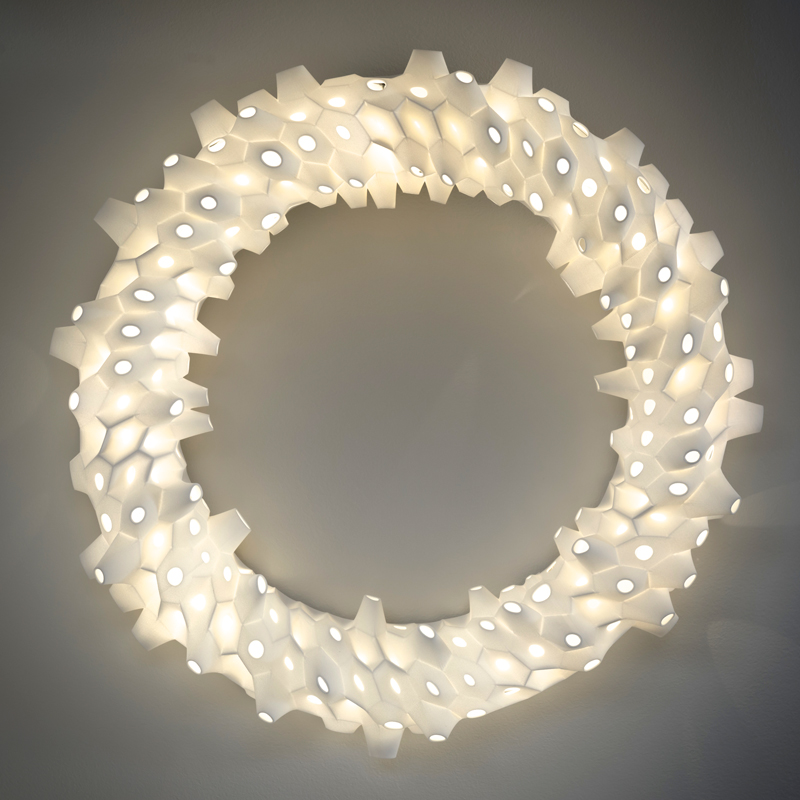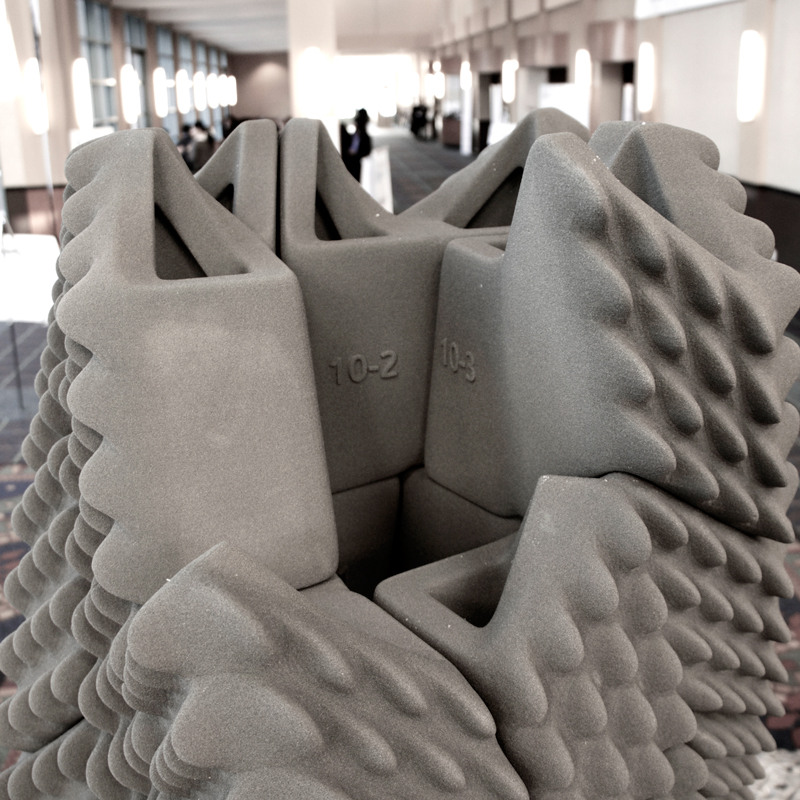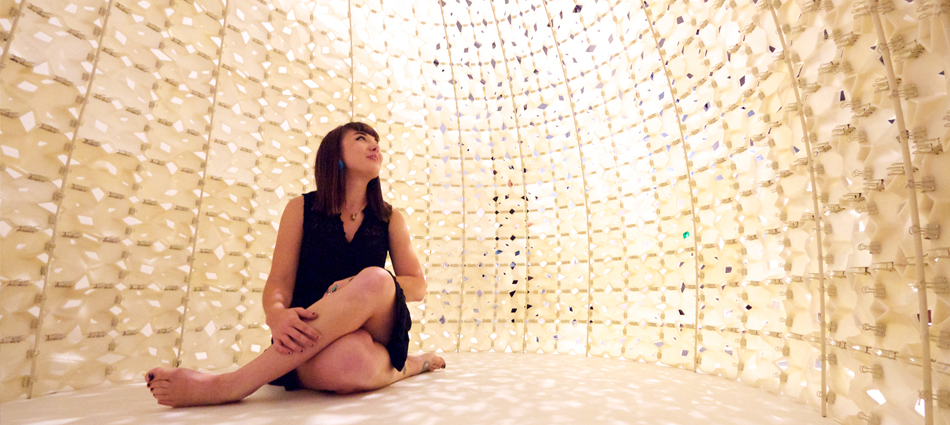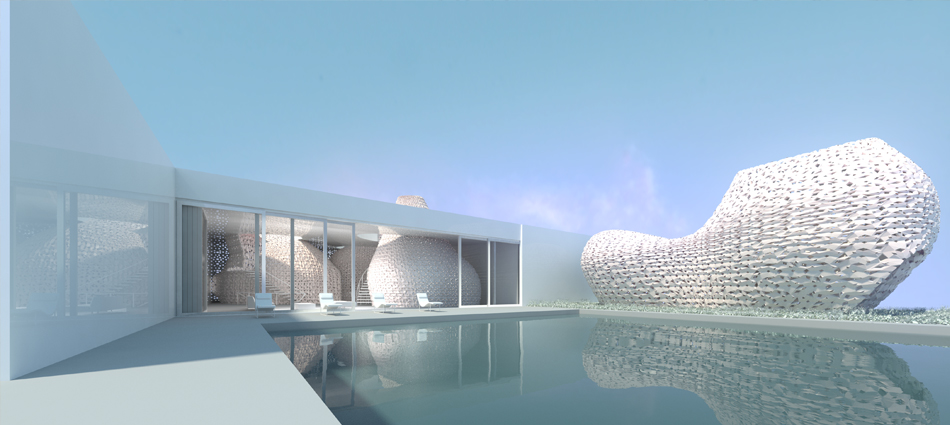Ever since I became more involved with the 3D printing industry there was one company that has always fascinated me because of its ability of make amazing looking objects with the most unlikely materials. After hearing about the Quake Column, Emerging Objects’ latest, amazing project with 3D printing, I set out to interview Ronald Rael, CEO and co-founder, together with partner Virginia San Fratello (Chief Creative Officer), of the company that describes itself as a “custom tile company” and intends to clad the world we live in an entirely new, more sustainable and, quite frankly, beautiful way.
Catching up with Ronald is not that easy, however. The amount of projects Emerging Objects is involved is no less impressive than the number of innovations the company has already presented. They focus on readily available materials and have 3D printed geometrically complex functional tiles and objects with ceramics, cement, salt, rubber and various kinds of wood. They have also conducted research with students with materials such as coffee, paper, chocolate and even blood. All these materials are used as powders (even the rubber and blood) and 3D printed using a binder jetting process.
“We primarily use 3D Systems’ machines and we find materials that we can use with their powder-based technology,” Ronald explains. “We currently have a farm of 13 printers and we strongly believe in the ‘farm’ concept, that is a modular approach to construction of larger structures rather than the use of one large machine.”
Modular means tiles, or bricks and most of the projects that Emerging Objects undertakes are aimed at the architecture and construction fields. “This all began for me as I was writing a book on buildings made of mud and I was theorizing about a future for this type of technology, seeing 3D printing as the ideal vehicle to propel clay construction forward,” Ronald tells me. “I am happy to see that these predictions are now coming true in many ways.”
What Rael is referring to are the many projects, from Massimo Moretti’s six meter tall BigBigDelta to Dini’s D-Shape to Koyhnevis’ Contour Crafting and all the ones that derived from those ides. Emerging Object’s approach, however, is different. “We [he and partner Virginia San Fratello] are both architects, we are both professors in architecture and we believe architecture is culturally complex. The other efforts in this field have an engineering-based approach, and are based on the development of scaled up machines. We want to 3D print buildings not as some futuristic proposition as much as by creating a fundamental architectural component: the 3D printed brick.”
This concrete approach has already spawned into some impressive experimental structures (such as the Quake Column and the recent 3D Printed House 1.0) and for a business model that is already self sustainable, alongside their Design Studio. “We are a start-up company and we are seeking investors but our business model is similar to that of a custom tile company,” Ronald explains. “In the US alone there are over a billion square feet of tiles and surfaces to clad. The difference is that we can make tiles that are not just 2 dimensional but 3 dimensional and that can have many different shapes. They can be self supportive and can thus become walls, and screens and partitions or even be used for exterior cladding. This allows us to completely rethink architecture and construction for the 21st century.”
Ronald explained that Emerging Objects has now entered talks with many very large companies interested in their approach and are debating whether to join forces with them or continue on their own and organically grow into a larger company that could carry out a number of larger projects, such as the ones they are currently involved in and that will be announced soon. “With the Quake column we had a limited budget and time constraints so we only built a single column but the whole idea is to use the same concept for a wall system that is seismically resistant such as those that make up entire cities like Cuzco in Perù.”
In a way Emerging Objects is proposing a concept that is present in many new ventures based on 3D printing technologies. Building the future by applying the concepts of the past. For many the personalized, tailor made, hand crafted approach is superior to the mechanical mass post-industrial revolution means of mass production. 3D printing can take the custom-made approach and apply it on the scale of industrial mass production. For Emerging Objects this means assigning a specific purpose to every single brick or tile that makes up structures of any size.
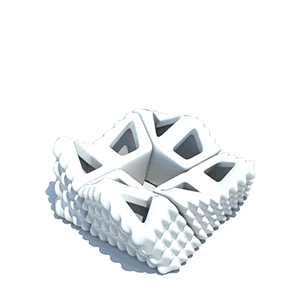
“These are questions we are asking – Ronald continues – not so much how the cities would look as much as how they will perform. Of course – he adds – a significant part of our work relates to the aesthetic aspects and we think that what we are doing is also an endeavour into beauty: we are researching materials but we also want to demonstrate that those materials can be beautiful.” Could the 3D printed walls of the future unite?


